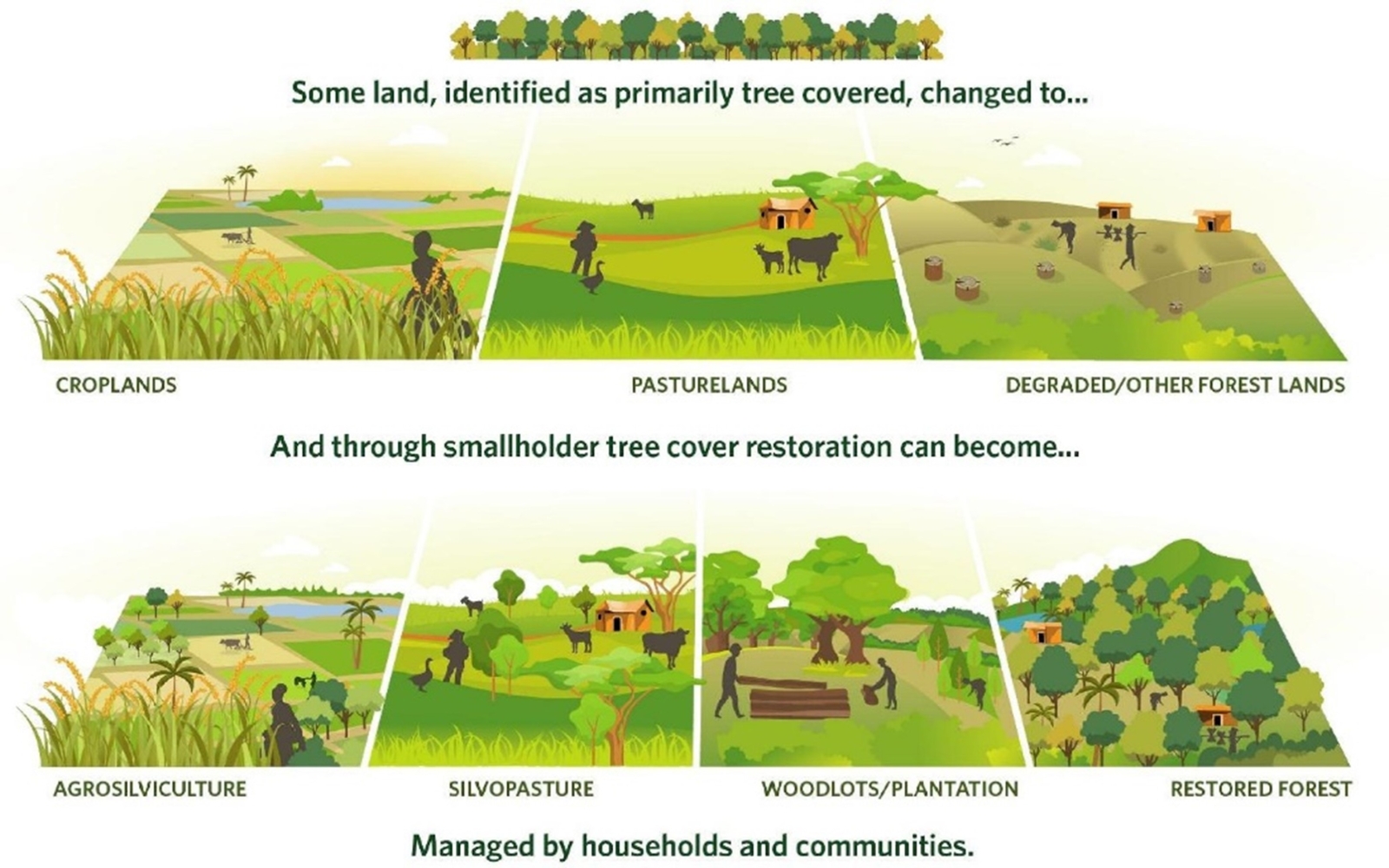September 1, 2022 | Global Environmental Change | Source |
Introduction: Restoring tree cover in tropical countries could significantly benefit millions of smallholders by improving incomes and environmental services. Despite their large total landholding, smallholders have not been adequately considered in global restoration studies. An international research consortium led by the Nature Conservancy assesses the potential of expanding agroforestry practices among small landholders.
Key findings: The research consortium uses global data and expert insights to identify potential sites of implementating low-cost tree restoration by 2050, which accrue to 280 million hectares of tropical croplands, 200 million hectares of pasturelands, and 60 million hectares of degraded forestlands. This restoration could impact 291 million people across these areas, with croplands and pasturelands receiving most significant benefits due to proximity to large population densities.
In Asia and Africa, smallholdings make up a significant portion of agricultural lands (76% in Asia and 60% in Africa), but they are less prevalent in the Americas. Despite the high potential for restoration in these regions, there are substantial barriers. Countries with the most low-cost restoration potential often lack supportive policies, governance, and market conditions. To overcome these challenges, four principles are recommended: partnering with smallholders, reducing uncertainty, strengthening markets, and mobilizing innovative financing.
Implementing these principles can help scale up restoration efforts, particularly by addressing local technical, financial, social, and policy challenges. These efforts should be tailored to local conditions and supported by comprehensive policy and market reforms to ensure effective and equitable restoration outcomes.

Figure | A depiction of how forestlands that underwent land use change to become croplands, pasturelands, or degraded forestlands can incorporate smallholder tree cover restoration to become agrosilviculture, silvopasture, woodlots or plantations, or restored forests.





